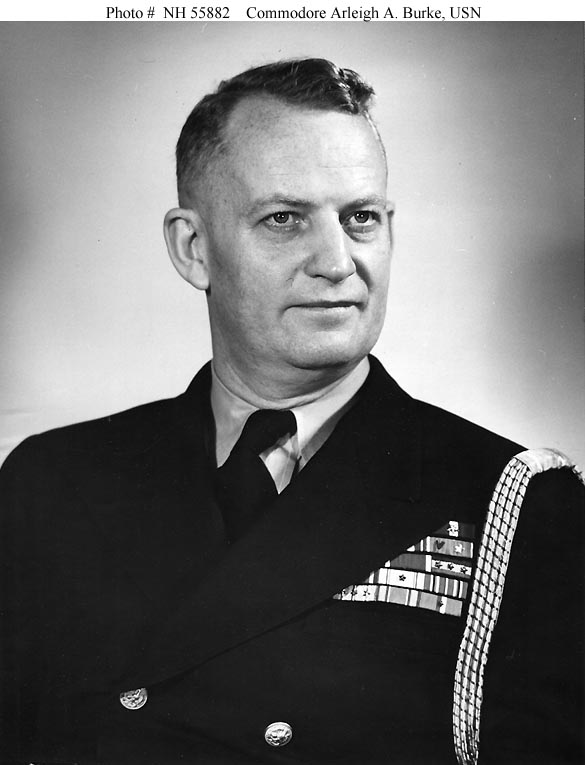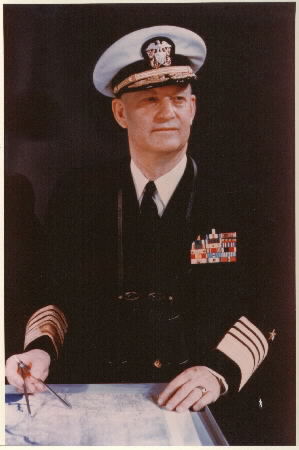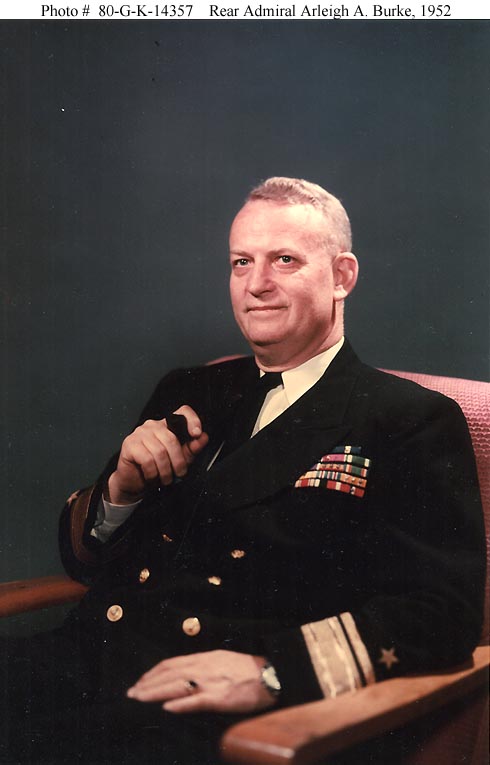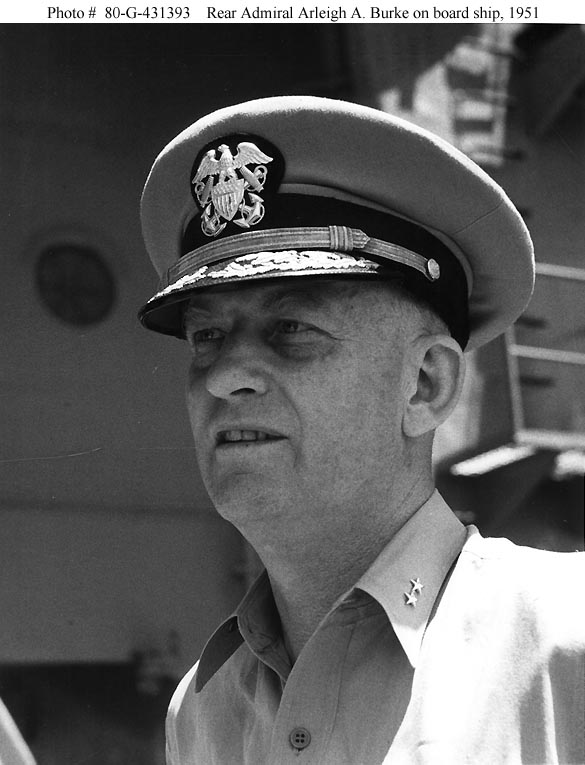
Admiral Arleigh Burke's Page
 |
 |
 |
 |
Biography
|
Arleigh Albert Burke was born far from sea in Boulder, Colorado on 19 October 1901. On 8 June 1923, he graduated from the US Naval Academy and was commissioned an Ensign in the US Navy. He married Miss Roberta Gorsuch of Washington, DC. Throughout his professional career, Admiral Burke had prepared himself for combat with the enemy having served in battleships and destroyers, and earning a Master of Science degree in Engineering from the University of Michigan. Then, when World War II came, he found himself, to his great disappointment, in a shore billet at the Naval Gun Factory [Washington Navy Yard] in Washington, DC. After persistent effort on his part, he received orders to the South Pacific where, under Admiral Halsey, he successively commanded Destroyer Division 43, Destroyer Division 44, Destroyer Squadron 12, and Destroyer Squadron 23. This latter squadron, known as the "Little Beavers," covered the initial landings in Bouganville in November 1943, and fought in 22 separate engagements during the next four months. During this period, the "Little Beavers," were credited with destroying one Japanese cruiser, nine destroyers, one submarine, several smaller ships, and approximately 30 aircraft. From Destroyer Command in the South Pacific, he reported in March of 1944 as Chief of Staff to Commander, Fast Carrier Task Force, Admiral Marc Mitscher. While serving with this famed carrier force, Burke was promoted to Commodore, and participated in all its naval engagements until June 1945 shortly before the surrender of Japan. He was aboard both USS Bunker Hill CV-17) and USS Enterprise (CV-6) when they were hit by Japanese suicide planes during the Okinawa campaign. At the outbreak of the Korean war, Admiral Forrest Sherman, then Chief of Naval Operations (CNO), ordered Admiral Burke to duty as Deputy Chief of Staff to Commander Naval Forces, Far East. From there, he assumed command of Cruiser Division Five, and in July 1951 he became a member of the United Nations Truce Delegation to negotiate with the People's Republic of China and North Korea to establish military armistice in Korea. After six months in the truce tents, he returned to the Office of Chief of Naval Operations where he served as Director of Strategic Plans Division until 1954. In April 1954, he took command of Cruiser Division Six, and in January 1955 assumed command of Destroyer Force Atlantic Fleet in which capacity he served until he succeeded Admiral Robert B. Carney as CNO in August 1955. Burke served an unprecedented three terms as CNO duty before being transferred to the Retired List on 1 August 1961. Arleigh Burke’s life as a civilian continued to be busy and fulfilling. Following several months of needed inactivity, he entered the business world by agreeing to join the boards of several major corporations, including the Newport News Shipbuilding and Drydock Company and Texaco Oil. In addition, he worked to establish the Georgetown University Center for Strategic and International Studies (CSIS). Serving as its chairman for some fifteen years, Burke helped craft it into a respected Washington “thinktank”. Burke died on New Year’s Day, 1996 at the age of 94. Eulogized by President William Clinton and both current and former senior Navy leaders during a service at the Naval Academy Chapel on 4 January, he was buried at the Academy’s picturesque cemetery at Hospital Point.
|